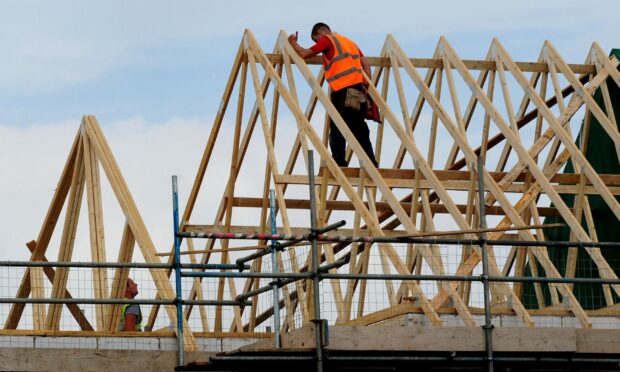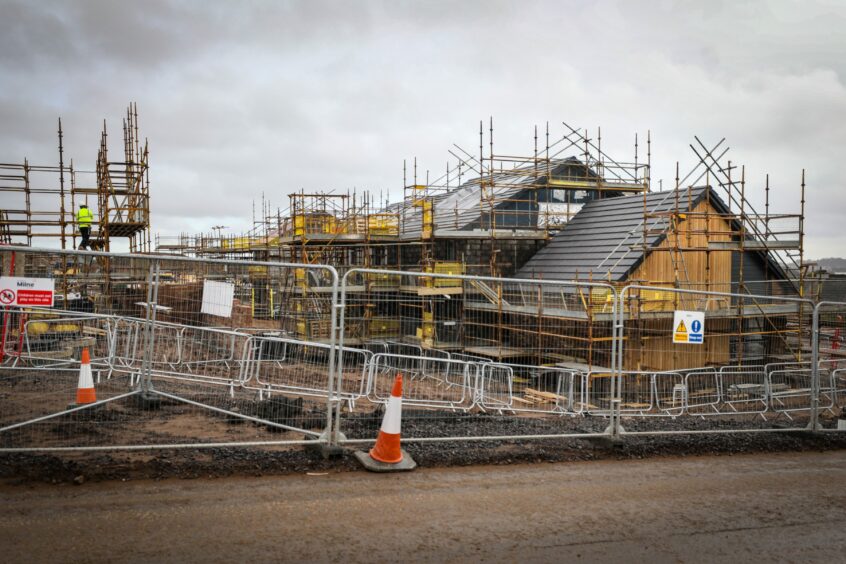The Scottish Federation of Housing Associations (SFHA) says there is still no let-up in the cost pressures of building affordable homes.
In March, it commissioned a report on rising prices over the past five years.
This found that, on average, the cost of an affordable property had jumped by £20,000 in that period – driven by a range of factors including Brexit, Covid-19 and increasing regulatory standards.
Fresh price pressure
The federation has now told The Press and Journal there is fresh price pressure due to various issues, such as Covid-19 recovery and Brexit, and logistical constraints including a significant upturn in workload globally, and higher raw material prices.
Stacey Dingwall, the group’s senior policy manager, said: “Many of SFHA’s members would say the £20,000 increase is now a conservative estimate.
“Issues around access to key building materials mean prices from contractors can change on a daily basis – if not more frequently.
“Not being able to access components such as skirting boards means contractors are unable to hand developments over to housing associations, resulting in tenants not being able to move in and loss of rental income for the social landlord.
“And it’s not just the construction side where the impact is felt – a lack of access to materials also has an effect on the ability of maintenance teams to carry out repairs.”
Ms Dingwall also said the above issues mean SFHA has “real concerns” the current level of investment in the Scottish Government’s Affordable Housing Supply Programme (AHSP) will not be enough to deliver the 110,000 homes Holyrood has pledged to build by 2040.
She added: “Increasing costs and too-low government investment levels would mean registered social landlords having to fund more of the developments themselves.
“This increased cost to housing associations will only put further pressure on their ability to keep rents affordable for tenants.”
SFHA took part in the Affordable Housing Investment Benchmarks Working Group, which met several times earlier this year, with a remit including assessing whether adjustments were required to the current set of benchmark assumptions that underpin the grant-funded element of the AHSP.
The government recently responded to the group’s report.
SFHA policy and membership director Aaron Hill later commented: “SFHA welcomes the increased investment for delivering affordable housing and the continued clarification from the Scottish Government that benchmarks are not grant rates or ceilings.
“Since the release of the group’s report in September, the pressure on construction supply chains has worsened, and it is vital benchmarks remain under review to meet these ever-increasing costs.
“Failure to do so could pose a threat to the scale and pace of delivery of the overall affordable housing supply programme.
“This is particularly important for Scotland’s rural and island areas which have historically faced higher development costs.”
Significant concerns
Mr Hill added: “We have significant concerns about the prescriptive nature of the decision to mandate the use of a series of procurement and measurement tools by housing associations.
“While we agree there should be a rigorous process to ensure homes are of high quality, and the need to evidence value for money, this will place additional requirements on our members, which could detract from the important job of delivering more new affordable homes, and supporting tenants and communities.
“We will seek to engage constructively in discussions with the Scottish Government over the coming weeks around the implementation of these proposals.”
Increased cost to housing associations will only put further pressure on their ability to keep rents affordable for tenants.”
Stacey Dingwall, senior policy manager, SFHA.
Ms Dingwall said it was important to note the total cost of a development is not funded by the AHSP.
Housing associations and local authorities – or registered social landlords – leverage in their own sources of finance to make projects work.
In the case of housing associations, this is in the form of private finance through deals they are able to arrange with banks.
In recent years the amount of finance having to be leveraged in by registered social landlords to make sure developments can go ahead has increased.
Net-zero challenge
Housing associations are also having to deal with the need to invest in their existing stock to ensure it meets government targets around net-zero.
Social and affordable housing in Scotland is among the most energy-efficient.
But the current next target for social housing – the Energy Efficiency Standard for Social Housing 2 – requires all properties to be brought to Energy Performance Certificate Band B by 2032.
Ms Dingwall added: “Despite these challenges, SFHA members remain committed to supporting the Scottish Government to delivering on its target to deliver 110,000 additional affordable homes by 2040.
“This commitment was recommended by SFHA’s 2020 joint research with CIH Scotland and Shelter Scotland into housing need in Scotland, and we very much welcome the political commitment to realising this.
“However, the Scottish Government must ensure the correct level of investment is made into its Affordable Housing Supply Programme in order that these much-needed homes can be delivered – the safe, warm and affordable homes that should be available to all, no matter their circumstances.”




